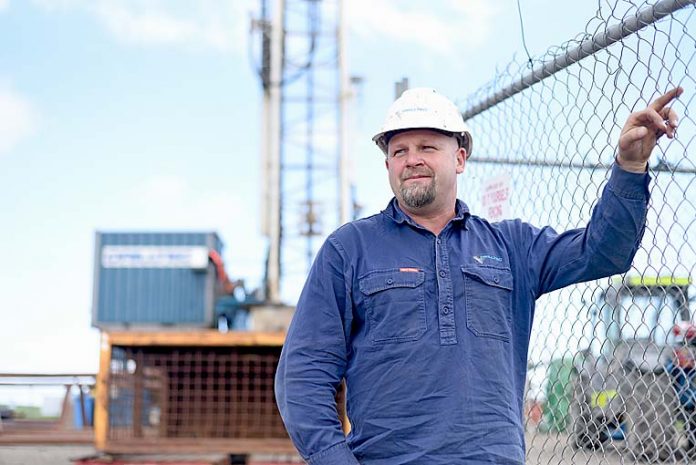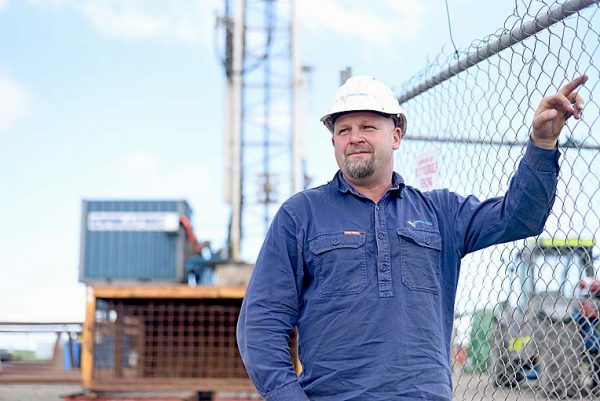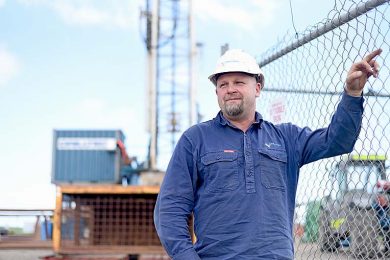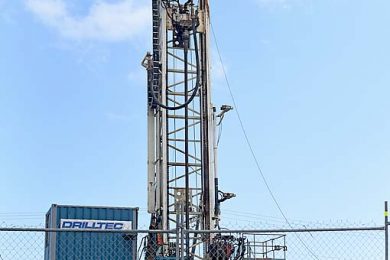

THE state’s water authority is drilling a new bore in Mount Gambier to secure public drinking water supply to more than 26,000 residents in the Mount Gambier district.
SA Water has begun drilling a new 250 metre deep hole at its Lake Terrace East site with a 15 metre tall rig, which will complement supply from the city’s iconic Blue Lake.
The new bore – which will replace a bore that will be decommissioned – is not expected to significantly change the taste of the city’s drinking water given it will flow through the same confined aquifer.
The towering rig will operate for eight weeks with residents being warned there could be noise and vibration emanating from the area.
These works coincide with new figures revealing the Blue Lake is sitting just above its 10-year average level following heavy winter/spring rains.

According to SA Water yesterday, the existing bore casing was nearing the end of its useful life and replacing it would ensure the ongoing security and quality of water supply.
SA Water customer field services senior manager Colin Bell said the height above sea level of groundwater in the Blue Lake had been used to monitor its level and volume since 1882.
“With the groundwater currently 11.7m above sea level, the Blue Lake will continue to supply Mount Gambier with a secure water supply as we move towards summer,” Mr Bell said.
He said Mount Gambier’s water supply system was one of 31 across the state to source water from underground aquifers, but unlike other locations, there was no treatment plant needed to clean the city’s water.
Instead, the region’s limestone naturally filters and cleanses the groundwater, allowing SA Water to complete the final disinfection process in around 10 minutes.
“We take pride in making sure our customers have safe, clean and clear drinking water every time they turn on the tap,” Mr Bell said.
“The region’s limestone aquifers are highly effective natural filters and complement the chlorine disinfection process used to sanitise water from the Blue Lake and bores.”
Mr Bell said chlorine was widely used for disinfecting drinking water around the world to ensure public health and had been used to treat water at Mount Gambier since 1971.
“Fluoride is also added, at the recommendation of SA Health, as it is a proven way to improve dental health,” he explained.
He said SA Water’s comprehensive water testing regime ensured quality was maintained throughout the production process and water provided to customers complies with the Australian Drinking Water Guidelines.
“Customers are at the heart of everything we do and managing and monitoring the processes to deliver safe drinking water is a major focus of our work at Mount Gambier and across the state,” Mr Bell said.
“Our expert employees collect and analyse more than 250,000 water samples each year from a variety of locations, from catchment to tap.”
Water samples are tested by scientists in the field, and in SA Water’s world-leading laboratories in Adelaide.
The city’s drinking water supply is then stored in tanks that efficiently use the power of gravity to pipe it into homes and businesses across Mount Gambier and the neighbouring towns of Yahl,
Moorak, Compton, Glenburnie, Worrolong, OB Flat and Suttontown.
The automated processes used to treat the water are operated under the watchful eye of SA Water’s multi-skilled team of 23 local water experts who oversee production, as well as the region’s water and sewerage networks.
Up-to-date water quality results are published at sawater.com.au where customers can find detailed information about what is in their water by postcode or suburb.









